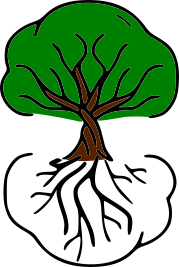On my many walks along the beach of Thompson Island in the Boston Harbor, I feel both separate and connected to the population on the mainland. Our boat only travels to the island a few times a day and since I can't walk across water, going into the city is not part of a daily ritual. On the other hand, we share the same water. In just a short time the water from the mainland will travel past me on the island and out to sea. Along with that water will be an unwanted gift: trash.
I could easily pick up a full garbage ball full of trash every time I walk on the beach. While it is depressing to see and live in trash every day, I read an article many years ago that gave me hope about life on this planet: Life in the "Plastisphere."
To get to the hopeful part, we first have to slog through more depressing material. But, I promise you, that learning about the plastisphere will change the way you see humans, life, and this planet.
Garbage Patches
Imagine yourself walking alone on a beach, when you accidentally drop your disposable water bottle. You don't even notice it and leave the beach for the day. That bottle eventually gets washed out to sea where the currents gather all of that trash into one place. Think of a sink drain bringing all the food particles from the dishes to the center.
Around the world there are five garbage patches, as outlined below. The one in the northern Pacific is the largest due to collecting both trash from Northern America and most of Asia.
The North Pacific Gyre, home to the Great Pacific Garbage Patch. Photo courtesy of Wikimedia.
Since we are dealing with such large scales, these patches can be undetectable from space. While some areas certainly look like the picture below, some of the plastic can break down to the point of invisibility to the naked eye. Boaters can be traveling through this patch without knowing it. The size of the Great Pacific Patch has been measured to anywhere between the size of Texas to twice the size of the lower 48 states.
The exciting, and hopeful, part of this discovery is not the trash itself, but what is found on the plastic particulates: new life forms! These microscopic warriors have developed and adapted into their new ecosystem: the plastisphere.
Some of the garbage in the Great Pacific Garbage Patch. Photo courtesy of How Stuff Works.
Why Plastic?
As Wikipedia defines it,
“Plastic is a material consisting of any of a wide range of synthetic or semi-synthetic organic compounds that are malleable and can be molded into solid objects. Plastics are typically organic polymers of high molecular mass, but they often contain other substances. They are usually synthetic, most commonly derived from petrochemicals, but many are made from renewable materials such as polylactic acid from corn or cellulosics from cotton linters.”
Even though not all of the trash found in the garbage patches is plastic, the majority of it is. And it makes sense, being that plastic has become a staple in much of our daily use, replacing many of the "traditional" materials like wood and stone. It is light, durable, and stable. Three things that make it perfect for fostering life at sea.
Let's think about scale for a hot sec. The diving mask below is a great example of marine life living on plastic. To them, it is just as durable as stone. Why not live on it? But eventually plastic is eroded down into particulates. This is where the plastisphere gets interesting.
Ocean snails called limpets using this plastic diving mask as a support for the community. Photo courtesy of Wikimedia.
These microscopic bits of plastic are still very durable, and since they are light they tend to stay near the surface, where sunlight can help life flourish. These particulates allow entirely new ecosystems to develop; much different than those in unpolluted ocean. And while that is all interesting in a "life finds a way" sort of way, that's not the hopeful part. Some of these microbes can break down the plastic into basic elements.
Think about it. Our landfills could become great "plastic composting" sites, where after a certain amount of time all the plastic could return to the earth, ready to be part of the greater ecosystem again. While we need to work on how much we consume as a global population, these new forms of life could help us deal with what we have already made.
Microscopic view of bacteria eating plastic in the 'plastisphere.' Photo courtesy of Wikimedia.
So the next time you see trash on the beach I hope you do two things.
- Pick it up. We don't need to make our garbage patches any larger in the ocean.
- Be in awe that no matter how much we humans tend to mess up, our greater global ecosystem always seems to have the answer.





